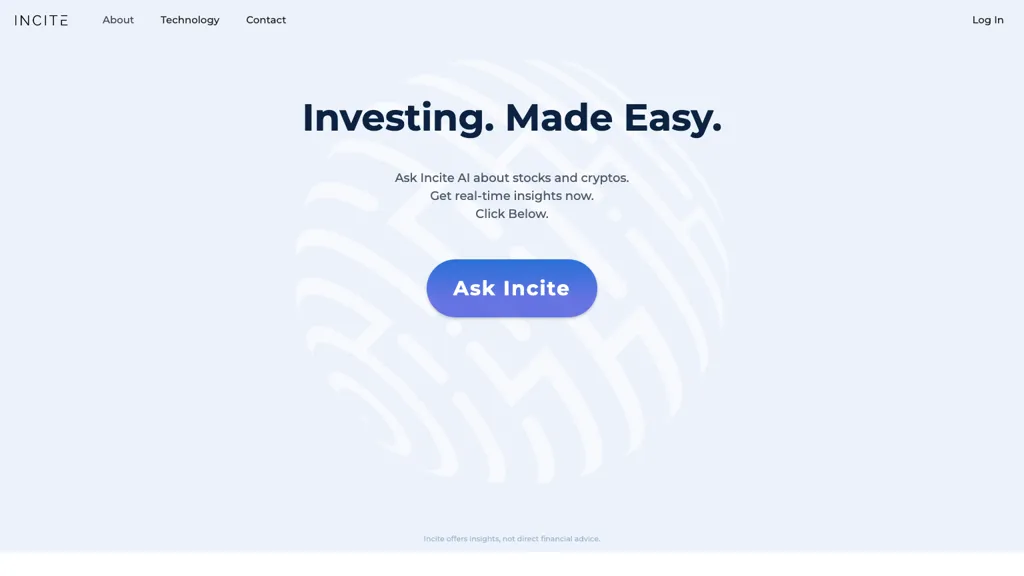20 Best News On Picking AI Stock Trading Platform Websites
20 Best News On Picking AI Stock Trading Platform Websites
Blog Article
Top 10 Tips On Assessing The Market Coverage For Ai Stock Predicting/Analyzing Trading Platforms
When evaluating AI trading platforms that predict/analyze stocks, market coverage is a key aspect to consider. It determines which assets and markets are accessible. With a platform that provides comprehensive coverage, you can diversify your portfolio and make the most of global opportunities. You can also adapt to different trading methods. These are the top 10 strategies for evaluating the market coverage offered by these platforms.
1. Evaluate Supported Asset Classes
Stocks: Ensure that the platform includes stocks from all major stock exchanges, which include NYSE, NASDAQ and LSE.
ETFs Find out if the platform allows you to choose from a large number of ETFs. This gives you an array of exposure.
Options and Futures: Find out whether the platform allows derivatives, such as options, futures and other leveraged products.
Commodities and Forex: Find out whether the platform is compatible with the forex pair, precious metals, agricultural products, energy commodities, and other commodities.
Cryptocurrencies: Verify if the platform you are using is compatible with major cryptocurrencies like Bitcoin and Ethereum, and alternative coins.
2. Check coverage in the geographic area.
Global markets - Ensure that the platform has the capacity to cover all major markets around the globe including North America (including copyright), Europe, Asia-Pacific markets, and emerging ones.
Make sure you focus on regional markets. Find out if the platform is focused on specific particular markets or regions that are aligned to your business goals.
Local exchanges. Determine if the platform allows for local or region exchanges, pertinent to your location or business strategy.
3. Comparing Real-Time Data to Delayed Data Delayed Data
Real-time data - Ensure that your platform is able to provide live market data that can aid you in making quick decisions, especially for active traders.
Delayed data - Check whether delayed data is free or is available at a reduced price. This may be sufficient for investors looking to invest in the long run.
Data latency. Examine whether the platform minimizes the time it takes to process real-time feeds, especially when it comes to high-frequency trading.
4. Evaluation of Historical Data
In depth of Historical Data Check that the platform has a large amount of historical data to backtest as well as analysis and testing (e.g. 10plus years).
The granularity of the data: Determine if the historical data include intraday, daily, weekly, and monthly granularity.
Corporate actions: Check if the historical data includes stock splits and dividends.
5. Examine the Order Book and Market Depth Data
For better price discovery make sure that the platform has Level 2 data.
Check to see if your platform displays real-time price spreads.
Volume data: Make sure that the platform provides detailed volume data for analyzing market activity and liquidity.
6. Review the coverage for Indices and Sectors
Major indices - Ensure the platform is compatible with major indices like S&P 500 and FTSE 100 to benchmark.
Sector-specific data: For targeted analysis, check if the platform offers information on a specific sector (e.g. technology, healthcare or energy).
Customized indexes. Find out if you are able to make or track custom indices based on your own criteria.
7. Integrate Sentiment and News Data
News feeds: Make sure that the platform has live feeds of news from reputable sources, such as Bloomberg and Reuters, for market-moving event.
Sentiment Analysis: Check whether the platform has sentiment analysis tools that are built on social media, news or other data sources.
Event-driven trades: Verify the platform's support of event-driven trades (e.g. reports on economic data or earnings announcements).
8. Check for Multi-Market Trading Capabilities
Cross-markets trading: The platform should permit trading across multiple markets or asset classes with a single user interface.
Currency conversion: Find out if your platform supports multi-currency trading and automated currency conversion.
Support for time zones: Find out whether your platform permits you to trade in multiple time zones.
9. Examine the coverage of alternative sources
Alternative data: Check if the platform integrates alternative sources of data (e.g., satellite imagery or web traffic, credit card transactions) for unique insights.
ESG data: Check if the platform includes environmental social, governance, and (ESG) data for socially responsible investing.
Macroeconomic data - Ensure that the platform has macroeconomic information (e.g. GDP, inflation) for fundamental analysis.
Examine the Feedback of Users and Review the Market Reputation
User reviews: Look for feedback from users to get a feel for the platform.
The reputation of the company: Find out if the platform has been approved by industry experts for its market coverage.
Case studies: Search for case studies or testimonials highlighting the effectiveness of the platform in particular assets or markets.
Bonus Tips
Trial period: Try out the platform for free to test how it covers the market and what information is available.
API access: Determine if your platform's API can access market data programmatically in order to run custom analyses.
Customer Support: Verify that the platform is able to offer support for any market-related issues or data problems.
With these suggestions, you can effectively assess the market coverage of AI stock predicting/analyzing trading platforms, ensuring you choose the one that gives you access to the market and the information you need for a successful trading. Comprehensive market coverage enables investors to diversify their portfolios, look for new possibilities, and adjust to market conditions that change. Follow the recommended ai trade for blog examples including ai for investing, ai stock picker, ai trading, incite, ai stock market, ai stock trading, ai investment platform, investment ai, best ai for trading, best ai stock trading bot free and more.
Top 10 Ways To Evaluate The Latency And Speed Of Ai Stock Trading Platforms
The speed and the latency of a trading platform are crucial factors to consider, especially in the case of active traders as well as high-frequency investors and algorithmic traders. A delay of just milliseconds can impact trade execution and profitability. Below are the top ten suggestions for evaluating speed and latency on these platforms:
1. Real-time Data Feeds to evaluate
Time to deliver data: The platform must provide real-time, accurate data within an extremely short time (e.g. with sub-millisecond delays).
Closeness of data source: Determine whether servers are near major exchanges.
Data compression - Verify that the platform employs efficient data compression techniques to improve speed of data delivery.
2. Check the trade execution speed
Processing speed of orders How fast the platform executes and processes trades once you've submitted an order.
Direct market access: Ensure whether the exchange allows direct orders to be made to the exchange.
Review the execution reports to determine the timestamps on order confirmation fill, submission, and confirmation.
3. Review the responsiveness of the Platform
User interface (UI) speed: See how quickly the platform's UI responds to your inputs (e.g. click buttons, loading charts).
Updates to charts - Check that your charts are up-to-date in real time and without any delay.
Mobile apps' performance: When using a mobile app ensure that it runs as fast as the desktop version.
4. Check for low-latency network infrastructure
Server Locations: Choose servers with low-latency that are near major financial centers, or exchanges.
Co-location Services: Verify whether the platform supports co-location. This will permit you to save your trading algorithms in servers located near the Exchange.
High-speed Networks: Verify the platform's utilization of fiber-optic, high-speed network, or other technology with low latency.
5. Backtesting and testing the speed of simulations.
Check how quickly the platform processes and analyzes the historical data.
Simulation latency: Verify that the software can simulate trading in real time without noticeable delay.
Parallel processing: Ensure that the system is running parallel processing, also known as distributed computing to speed the process of complex calculations.
6. Calculate API Latency
API responses: Determine how fast APIs respond to requests (e.g. retrieving data from the platform, putting in orders).
Rate limits: Verify that the API has adequate rates to avoid delays during high-frequency trading.
WebSockets support: Verify that the platform utilizes WebSockets protocols to provide low-latency streaming of data.
7. Test Platform Stability When Loaded
High-volume Trading: Play with large quantities of trading scenarios in order to see if the platform is responsive and stable.
Market volatility: Test out the platform at times of high volatility in order to see if it can handle rapid pricing shifts.
Stress testing: Find out whether the platform permits users to test their plan under extreme circumstances.
8. Examine network and connectivity
Internet speed requirements: To ensure optimal performance, ensure that your internet speed meets the recommended platform's speed.
Redundant connections: Find out if the platform supports redundant internet connections in order to avoid interruptions.
VPN latency. Check to see if you're using the VPN if this introduces latency.
9. Look for Speed Enhancement Features
Pre-trade Analyses: Check that the platform has the pre-trade analysis in order to maximize execution speed and order processing.
Smart order routing: Check if your platform is using SOR to determine the most cost-effective and fastest execution venue.
Monitoring of latency: Ensure that the platform allows you to analyse and track your latency live.
Examine user feedback and benchmarks
Reviews from users: Search for user feedback on the platform to get an idea of its speed and speed.
Third-party Benchmarks: Find independent benchmarks that compare the speed of a platform to its competitors.
Case studies Ask the platform whether it has case studies or testimonials that show its capabilities with low latency.
Bonus Tips
Trial period: Try out an unpaid test or demo version of the platform to test the performance of the platform in real scenarios.
Customer Support: Check that the platform can offer assistance with issues related to latency, or optimization.
Hardware specifications. Check if the platform is compatible with specific hardware like high-performance computers.
Utilizing these guidelines, it is possible to accurately assess the speed, latency, and precision of AI software for analyzing and predicting stocks. This will allow you to select a system according to your specific needs in trading and minimize any possible delays. The need for low latency is vital for high-frequency and algorithmic traders. Even small delays can have a huge impact on profitability. Take a look at the top stock trading ai for site recommendations including ai stock analysis, how to use ai for copyright trading, chart analysis ai, chart ai trading, ai copyright signals, chart analysis ai, chart analysis ai, invest ai, ai stock prediction, ai trading tool and more.